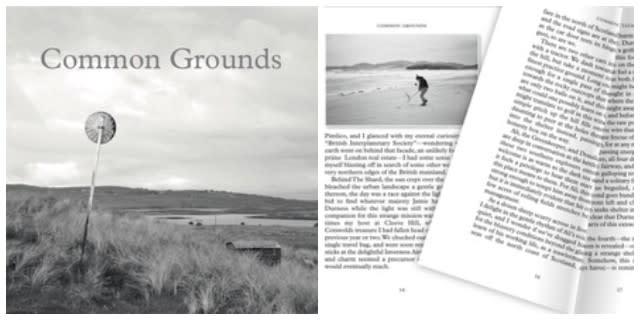
Guide to Le Golf National
Card of the Course at Le Golf National, venue for the 42nd Ryder Cup between Europe and the United States.
Le Golf National is the Star of the Show
Hole-by-hole guide to the Albatros Course at Le Golf National
1st, 419 yards, par 4:
A tough start with water all the way down the left-hand side, bringing back memories of Tiger Woods finding a watery grave on a similar opening hole at The K Club in 2006. An iron or fairway wood off the tee will leave a mid-iron into a green guarded by water and two bunkers.
2nd, 210 yards, par 3:
More water down the left, with back-left pin positions forcing a long carry to find a narrow putting surface, with bunkers waiting to catch any shot which bails out over the green.
3rd, 558 yards, par 5:
Extended in 2004, the first par five requires an accurate tee shot which favours the left side of the fairway in order to gain the best view of the green, which is guarded by a large oak tree which stands just in front of a long narrow bunker.
4th, 486 yards, par 4:
New bunkers mean players will need to produce a long and straight tee shot to set up the uphill approach to an elevated green, which is large and full of slopes.
5th, 405 yards, par 4:
A welcome respite with three fairway bunkers guarding the corner of a slight dogleg and more sand traps in front of a green which narrows at the back.
6th, 380 yards, par 4:
One of several holes without a single bunker, the short sixth represents a good birdie opportunity with the biggest difficulty coming in judging the distance of the approach to a green below the level of the fairway.
The sun rises on #RyderCup week ???? pic.twitter.com/Xs2Shn0dDQ
— Ryder Cup Europe (@RyderCupEurope) September 24, 2018
7th, 457 yards, par 4:
A dogleg right which features a tee shot played to the elevated section of a two-part fairway, followed by a tricky approach to the long, relatively narrow green. Out of bounds awaits a wild drive to the right.
8th, 208 yards, par 3:
A deep bunker guards the front of the large green on this par three, where judging the wind is likely to be the biggest difficulty for the players and caddies.
9th, 579 yards, par 5:
A gentle dogleg right with a water hazard to the left of the fairway that usually does not come into play. Only the biggest hitters will be able to get to the narrowest green on the course in two if the hole plays into the prevailing wind.
10th, 375 yards, par 4:
A short par four which, when played downwind, could see some players attempt to reach the green, particularly in fourball matches. Alternatively, an iron off the tee to avoid the water hazard on the left is likely to be a popular choice.
Lull before the storm ????????#RyderCup #LeGolfNational pic.twitter.com/xUJPatqe9I
— Ryder Cup Europe (@RyderCupEurope) September 22, 2018
11th, 178 yards, par 3:
A hole which underwent major changes in 2016, with the water hazard guarding the front of the green extended and two new bunkers added at the back of the green.
12th, 433 yards, par 4:
A dogleg right with a long bunker down the left of the fairway and a shorter one to the right making for a difficult tee shot before an approach to a large and tricky green.
13th, 415 yards, par 4:
Another dogleg right but this time water is the main hazard, right of the fairway and in front of the green. Oak trees also narrow the approach to the putting surface.
14th, 544 yards, par 5:
A huge bunker guards the front and left-hand side of a two-tier green which slopes away from the players at the back.
Is it Friday yet? pic.twitter.com/T0LndXhktl
— Ryder Cup Europe (@RyderCupEurope) September 22, 2018
15th, 408 yards, par 4:
The start of a wonderful closing stretch, the 15th has water running down the right-hand side of the hole and in front of the green, making accuracy paramount with every shot.
16th, 177 yards, par 3:
Water protects the right-hand side, with any players going left likely to be faced with a tricky downhill chip or putt back towards the hazard.
17th, 480 yards, par 4:
There are no bunkers or water hazards on the 17th, but the uphill tee shot and a green which slopes from right to left means par is a good score.
18th, 471 yards, par 4:
A potentially thrilling closing hole, with water all the way down the left of the hole - and in front of the green - and pot bunkers on the right of the fairway. The toughest hole on the course.
About the author

Derek Clements is a seasoned sports journalist and regular Golfshake contributor, specialising in tour coverage, opinion pieces, and feature writing. With a long career in national newspapers and golf media, he has reported on the game across Europe, the United States and Australia. A passionate golfer, he has played and reviewed numerous renowned courses, with personal favourites including Pebble Beach, Kingsbarns, Aldeburgh, Old Thorns and the K Club. His love of the game informs his thoughtful commentary on both professional golf and the wider golfing community.

The Ryder Cup is unlike any other tournament in golf and the atmosphere is something that every golf fan should experience. The experts at Golfbreaks.com can help with all aspects of your Ryder Cup experience, from accommodation and ticket packages to hospitality and travel and playing some of the fantastic nearby courses.
Tags: ryder cup










